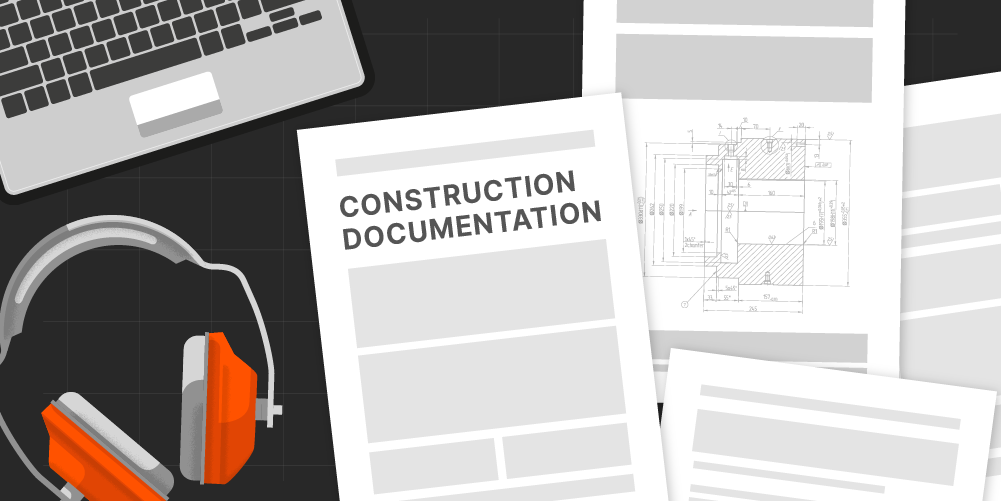— 4 min read
Construction Purchase Orders 101: A Contractor’s Guide to POs
Last Updated Nov 4, 2024
Last Updated Nov 4, 2024

Construction purchase orders are key financial elements of an overall project contract. In construction specifically, a purchase order (PO) is typically validated by two parties: the buyer and seller. The buyer (usually an owner or head contractor) issues a PO to the seller (usually a head contractor or speciality contractor) to cover the cost of the project.
The document outlines the price and quantity of goods or services necessary to complete the project contract as agreed upon by both parties.
Table of contents
Information in a Construction Purchase Order
In order to illustrate the contents of a construction purchase order and how they are relevant to the completion of a project, let’s use a hypothetical scenario featuring Jane and John. Let’s say Jane is a project manager at a HC hired to build a warehouse while John is a concrete contractor who won the tender to pour the foundation of that warehouse.
Description of Deliverables
Upon receiving the tender for the concrete pour, John and his team visit the site. They identify the tools, equipment, materials and labour needed to complete the project. Once he relays that information to the HC, Jane’s team will draft a PO for the deliverables outlined by John and his team.
Number of Deliverables
As Jane’s team is drafting the PO, they have to be diligent with listing the quantities for each deliverable provided by John. This is important because a PO explicitly states the HC’s fiscal responsibility for the deliverables needed to complete the work expected of the speciality contractor. This document, therefore, protects both parties by ensuring that:
- The HC receives the amount and quality of work requested.
- The SC gets paid for the items needed to complete the work requested.
Agreed-Upon Cost
As Jane’s team lays out the itemised list of deliverables requested by John’s team, the two parties will agree on a cost per item and possible discounts for certain quantities of those items.
Terms of Payment
The terms of payment for a construction purchase order are usually based on credit. The HC sends the PO to the SC to request a service on credit. This protects the HC in the event that payment is given before the completion of the project.
The terms of payment can also be set in regards to a net payment term. It defines how many days after a progress claim is submitted the buyer has to make the payment. In this scenario, we will say that Jane approves a PO with a net 30 term, which means John will be paid within 30 days of submitting a progress claim for the completed work.
Due Dates
Now that the parties have agreed to the terms of payment, Jane and Johns’ teams will decide on due dates for the deliverables requested in the PO. These dates will inform the date of delivery of those deliverables.
Method of Delivery
One of John’s deliverables in the PO is an extra concrete mixer that has to be delivered from a different territory. The delivery method for that mixer will typically be defined as one of two FOB (Free On Board) shipping terms: FOB Shipping Point (or FOB Origin) and FOB Destination. If “FOB Origin” is agreed upon, the HC will become responsible for any loss or damages incurred to the mixer as soon as it leaves the warehouse and is in transit to the worksite. If “FOB Destination” is agreed upon, the SC will be responsible for any damage incurred to the mixer until it reaches the worksite.
Reference Numbers
The reference number is one of the most important pieces of the construction purchase order—it helps track the document. Since a project can have hundreds of PO’s attached to it, they can commonly become lost or jumbled during a project’s lifetime. The only way to prove that a service or material was completed or delivered as requested is to be able to locate the respective PO by its reference number.
Purchase Order vs Progress Claim
There is one main difference between a construction purchase order and a progress claim. A PO is submitted by the buyer (Jane the HC) to determine the cost of a contract before the work is completed. In contrast, a progress claim is submitted by the seller (John the SC) after the work is completed to receive an agreed-upon payment.
Purchase Order vs Contract
The difference between a construction purchase order and a contract is that a contract is a legally binding document that covers products, agreed prices and payment terms, and conditions for the entirety of a construction project. It includes all necessary purchase orders (documents that outline the price and quantity of goods or services necessary to complete the project contract) and progress claims.
Pay Attention to PO Details
A construction purchase order is a key item in a project contract because it’s a legally binding document that protects both the buyer and seller of a product or service. When drafting a PO, it’s important to remember to be explicit and detailed when filling out the following sections:
- Description of deliverables,
- Number (or quantity) of deliverables,
- Agreed-upon cost,
- Terms of payment,
- Due dates,
- Method of delivery,
- Reference Numbers.
Categories:
Tags:
Written by
Emma De Francesco
18 articles
Emma is currently Strategic Product Consultant at Procore where she loves partnering with clients to help them achieve the best possible results. She has worked as a Project Manager in previous roles, responsible for overseeing small to medium-sized projects across various sectors including commercial, health and lifestyle, retail, government and hotels. Throughout these projects, she managed everything from project costs, program and quality & safety, to design management, procurement, and authority approvals.
View profileExplore more helpful resources

Document Control, Mastered: Blueprints, Binders & the Cloud
In construction, poor document control is more than a hassle—it’s a liability. Mismanaged documents can delay builds, drive up costs, and cause security and compliance issues. It’s a challenge facing...

Construction Progress Claims: Keeping Cash Flowing
In construction, steady cash flow is critical—and progress claims help make that possible. These claims enable staged payments based on work completed, rather than waiting until project completion. In this...

Construction Analytics: The Key to Smarter Decision-Making
Data is everywhere in construction—embedded in schedules, site activity logs, safety reports, and cost tracking tools. Yet despite the abundance of available information, many construction decisions still hinge on gut...

Construction Document Management: The Challenges and Benefits of Embracing a DMS
Every construction project begins, continues, and ends with a mountain of paperwork. From initial bidding documents to contractor agreements, blueprints, variation orders, inspection reports, on and on it goes. And...